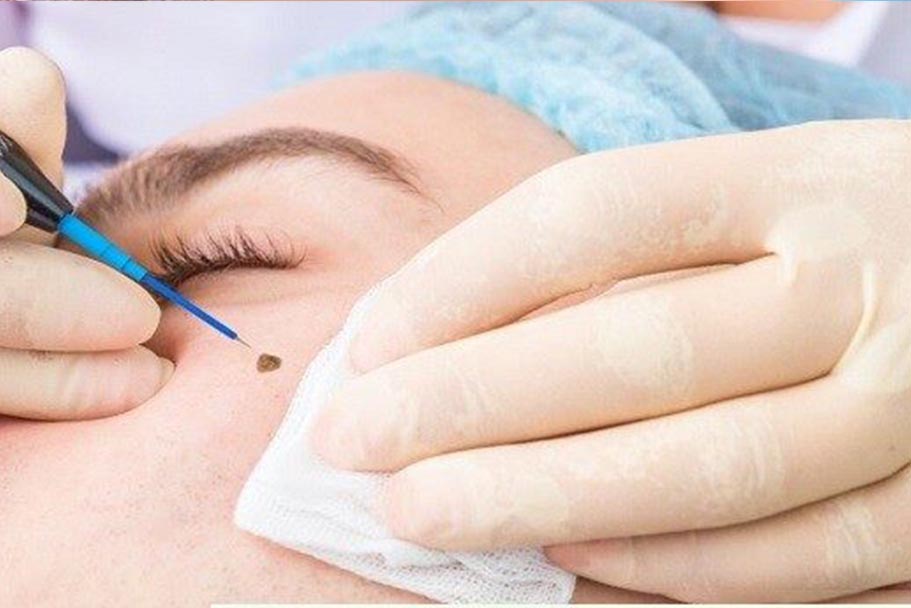LARGE MOLE AND WARTS REMOVAL
Large mole and wart removal using laser is a minimally invasive procedure that utilizes focused laser energy to safely and effectively remove or reduce the size of moles and warts.

Here are the key aspects of this procedure:
Consultation and Evaluation:
The process begins with a consultation with a medical professional. During this consultation, the size, location, and type of mole or wart will be assessed, and the suitability for laser treatment will be determined.
- Preoperative Preparation: Before the procedure, the area around the mole or wart is thoroughly cleaned. In some cases, a local anesthetic may be applied to numb the area and ensure patient comfort.
- Laser Treatment: The laser emits a focused beam of light that is absorbed by the pigmented cells in the mole or wart. This energy is converted into heat, causing the cells to break down and disintegrate.
- Precision and Control: Laser therapy allows for precise targeting of the affected area, minimizing damage to surrounding healthy tissue. The depth of treatment can be controlled by adjusting the laser settings.
- Mole Removal: For moles, the laser is used to gradually ablate the raised surface, layer by layer, until it is level with the surrounding skin. In some cases, a deeper penetration may be required.
- Wart Removal: Laser therapy is effective in destroying the blood vessels that supply nutrients to the wart, causing it to shrink and eventually fall off.
-
Postoperative Care:
After the procedure, the treated area is typically covered with a dressing or ointment to protect it. Patients are provided with specific aftercare instructions.
Advantages of Laser Mole and Wart Removal:
- Minimal Scarring: Laser therapy minimizes scarring, as it precisely targets the affected area without causing excessive damage to surrounding healthy tissue.
- Minimal Discomfort: Local anesthesia is often sufficient for this procedure, and patients usually experience minimal discomfort during and after the treatment.
- Quick Recovery: Compared to traditional surgical excision, laser mole and wart removal typically involves a shorter recovery period.
-
Reduced Risk of Infection:
The controlled nature of laser therapy reduces the risk of infection, as there is minimal bleeding during the procedure.
Considerations and Important Points:
- Multiple Sessions (if necessary): Depending on the size and depth of the mole or wart, multiple sessions may be required for complete removal or correction.
- Follow-Up Appointments: Patients will have follow-up appointments to monitor the healing process and ensure the desired results are achieved.
- Potential Risks: While laser therapy is generally considered safe, there may be risks of hyperpigmentation, hypopigmentation, or scarring, particularly if not performed by a qualified professional. Laser mole and wart removal is a safe and effective option for individuals seeking to remove or correct these skin abnormalities. It's crucial to consult with a board-certified dermatologist or healthcare professional with expertise in laser procedures to ensure the treatment is appropriate and performed safely.
